In our vast universe there are many mysteries and secrets, which are little by little discovered by technological marvels. In several of my post I have placed amazing images captured by a magnificent instrument.
Hubble Space Telescope
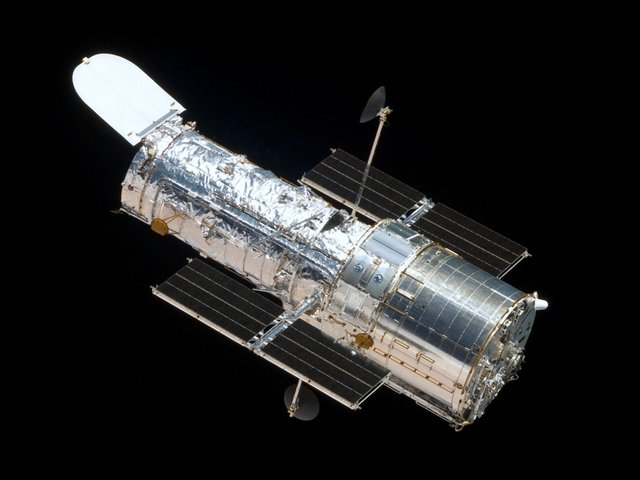
Hubble Space Telescope. Credits: Wikipedia
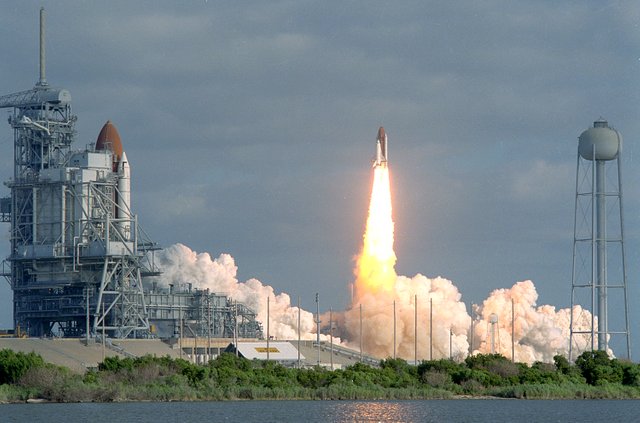 Discovery Space Shuttle taking off. Credits:Wikipedia
Discovery Space Shuttle taking off. Credits:WikipediaOn April 24, 1990 the Discovery Space Shuttle was launched from Cabo Cañaberal, Florida. The STS-31 mission aimed to place a telescope in orbit that would take us to see thousands of light years in the universe, the Hubble Space Telescope.
Named for the "father" of observational cosmology, Edwin Hubble.
The most famous telescope on earth never touches the planet, is in constant orbit above us at 593 km and travels near 20,000 km/h. For more than 25 years complete a return to Earth every 96 minutes.
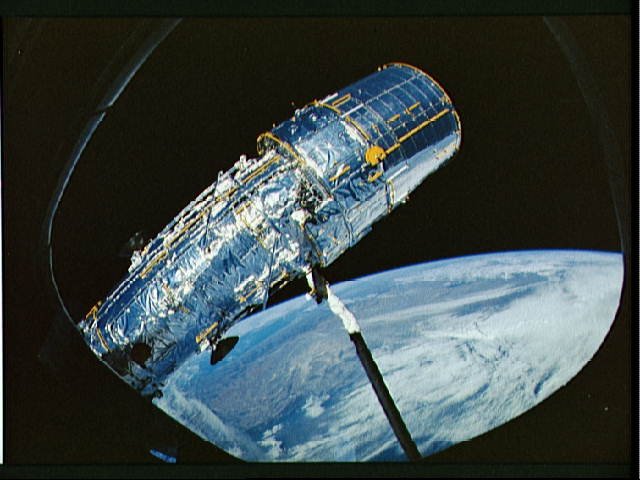
Deployment of Hubble. Credits: Wikipedia
Hubble's powerful look sees everything, thanks to the collaboration between teams of scientists and engineers from NASA and the Space Telescope Science Institute.
Hubble is the first telescope based on space. At about 13.2m in length it is almost the same size as a school bus, its weight is 11 tons and its diameter is 4.2m. This powerful telescope does not consume more energy than a hair dryer.
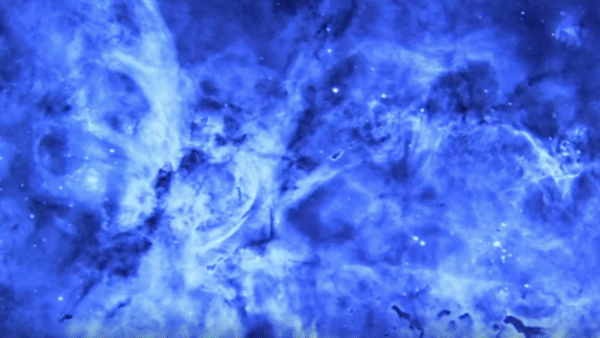 Credits: source
Credits: sourceInside the telescope, it has a 2.4m mirror that captures even the smallest details of the greatest confines of the universe. Hubble sends data in black and white. After image experts, they color these images according to the chemical elements that the Hubble instruments detected.
Blue shows oxygen (O2), red shows sulfur (S) and green shows hydrogen (H).
With additional information from other telescopes, artists can take a three-dimensional trip as shown below:

Bubble Nebula (NGC 7635). Credits: NASA's Goddard Space Flight Center Giphy
Before the Hubble images like the following, they simply did not exist:
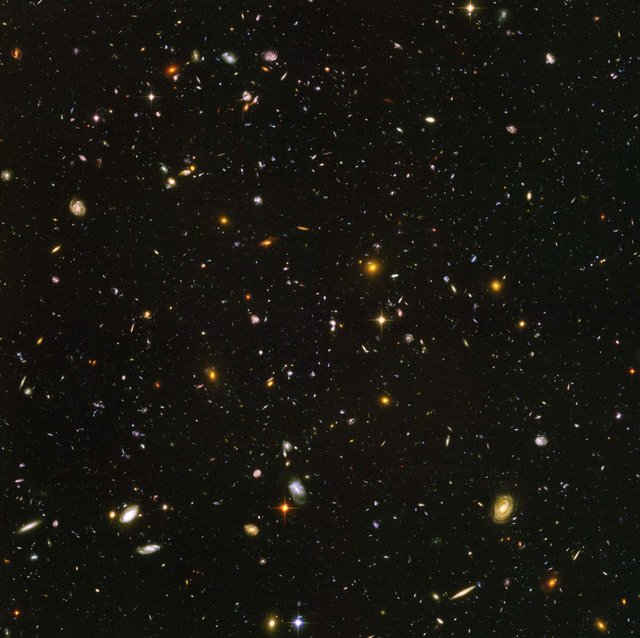
Hubble Ultra Deep Field. Credits: NASA/ESA - Wikipedia
It is the deepest image of the universe, whose projection of its light was emitted more than 13,000 million years ago, when the universe was only about 800 million years old.
As we know, all electronic equipment needs maintenance every so often to keep working perfectly. The Hubble is not the exception, important missions have been carried out for the maintenance and corrections of faults, as well as improvements to the telescope. These missions are called, Service Missions (SM).
 Photo captured on May 20, 1990, NGC 3532. Credits: Wikipedia
Photo captured on May 20, 1990, NGC 3532. Credits: WikipediaThe first service mission (SM-1) was the most important. It was carried out with the shuttle Endeavor in 1993. Hubble had a failure in capturing images, as they were blurry.
The main objective of the mission was the replacement of the High Speed Photometer, the corrective COSTAR optics and the installation of the Planetary and Wide Angle Camera 2 en el lugar de la cámara original.
Other instruments were also added for the best performance.
After 3 years that Hubble was in orbit, for the first time sent a clear image of a star.
As time passed, the Space Telescope gained many important improvements. One of the most famous images captured by Hubble was a nebula.
The Eagle Nebula (M16)
7000 light years away is the nebula of the eagle, in a part of this cluster of gas is a region known as the pillars of creation. Named so, by the number of stars that are born inside.

Pillars of Creation. Credits: NASA/HUBBLE - Wikipedia
Hubble continues to send impressive images. Spectacular galaxies, exploding stars and huge nebulae, all with unprecedented details.
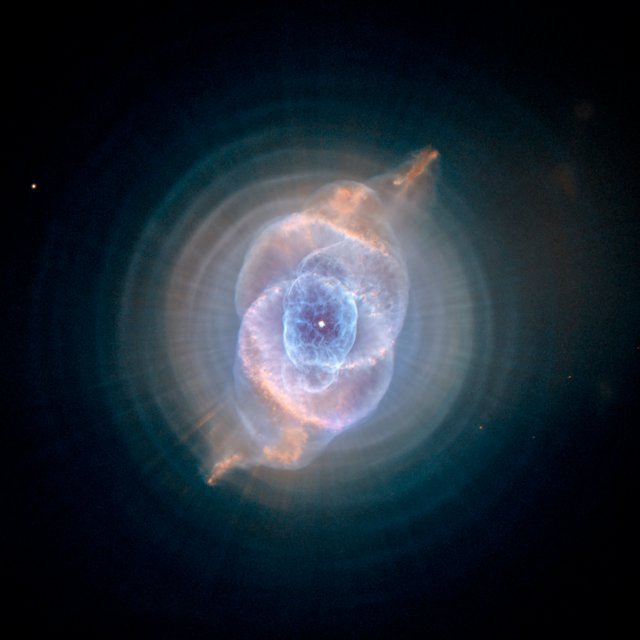 Cat's Eye Nebula(NGC 6543). Credits: Hubble - Wikipedia Cat's Eye Nebula(NGC 6543). Credits: Hubble - Wikipedia | 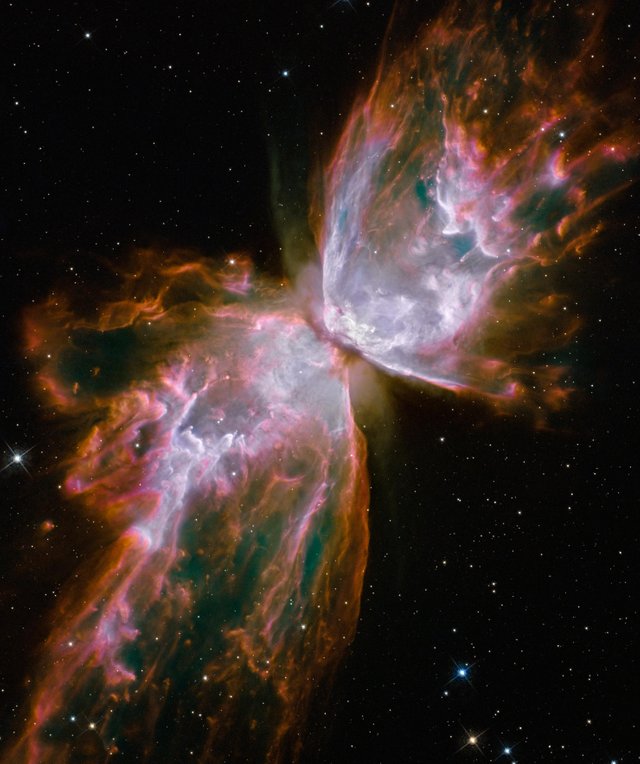 Butterfly Nebula(NGC 6302). Credits: Hubble- Wikipedia Butterfly Nebula(NGC 6302). Credits: Hubble- Wikipedia |
|---|---|
 Sombrero Galaxy(NGC 4594). Credits: Hubble - Wikipedia Sombrero Galaxy(NGC 4594). Credits: Hubble - Wikipedia | 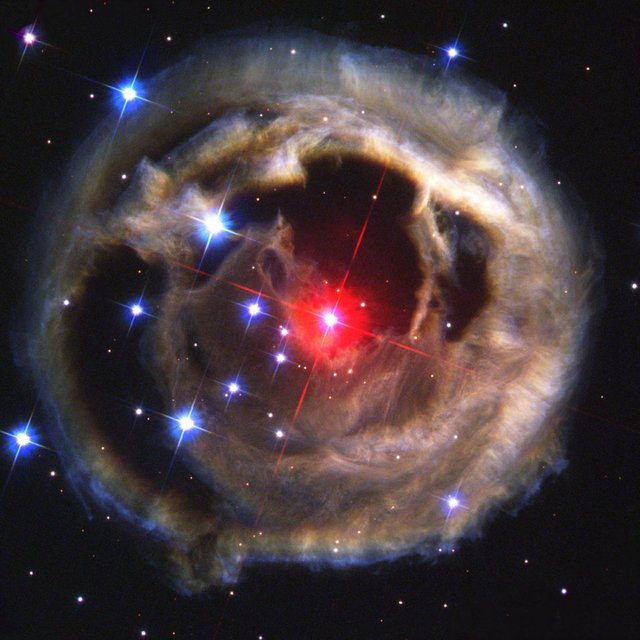 V838 Monocerotis. Credits: Hubble - Wikipedia V838 Monocerotis. Credits: Hubble - Wikipedia |
In 2009 after almost three years of preparation, astronauts would return to Hubble. Its mission is to update the planet's favorite telescope for the last time, where they repaired and added new instruments.
It is expected that Hubble will come to an end in 2020, this depending on batteries, gyroscopes and atmospheric braking.
It is anticipated that by next year 2019, NASA will launch into space a new and powerful space observatory, the James Webb Space Telescope.

James Webb Space Telescope. Credits: Wikipedia
It is planned that this telescope will be launched by the Ariane 5 rocket (designed to place satellites in orbit) between March and June of 2019 from the region of French Guiana in South America.
The main mirror segments of JWST are made of Beryllium (Be). It is a gray, toxic and light element that is generally used as hardener alloys.

Segments of JWST mirrors. Credits: Wikipedia
One of the main objectives of this telescope is to seek the light of the first stars in the universe, after the big bang. Also study the planetary systems, the formation of galaxies and the origins of life.
No need to know about astronomy or astrophysics to admire the enormous beauty of the universe that gives us these technological wonders.
I hope you have enjoyed some of the impressive images captured by Hubble.
Greetings steemians.
Source of information:
1. STS-31 - Wikipedia - 2. HST - Wikipedia - 3. JWST - Wikipedia - 4. Hubble's ultra-deep field - Wikipedia - 5. Space shuttle Discovery - Wikipedia - 6. Ariane 5 - Wikipedia - 7. NatGeo The cosmic journey of the hubble - 8. The amazing Hubble universe - 9. Berilium - Wikipedia
Good read and mesmerizing photos, upvoted, resteemed.
Downvoting a post can decrease pending rewards and make it less visible. Common reasons:
Submit
Thank you friend
Downvoting a post can decrease pending rewards and make it less visible. Common reasons:
Submit
Hi, I found some acronyms/abbreviations in this post. This is how they expand:
Downvoting a post can decrease pending rewards and make it less visible. Common reasons:
Submit
I did not know what a space telescope was capable of, interesting post, I did not know about Hubble.
Downvoting a post can decrease pending rewards and make it less visible. Common reasons:
Submit
Downvoting a post can decrease pending rewards and make it less visible. Common reasons:
Submit
Nice article. It was a good read. As you mentioned these images and information will even attract a layman. It is not necessary that only a scientist can admire the beatuy of this universe.
Downvoting a post can decrease pending rewards and make it less visible. Common reasons:
Submit